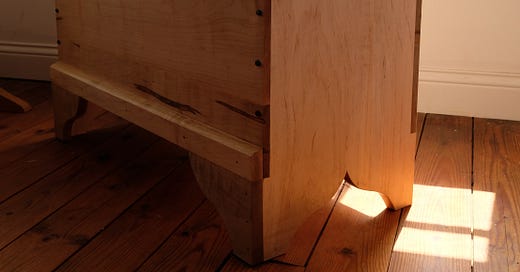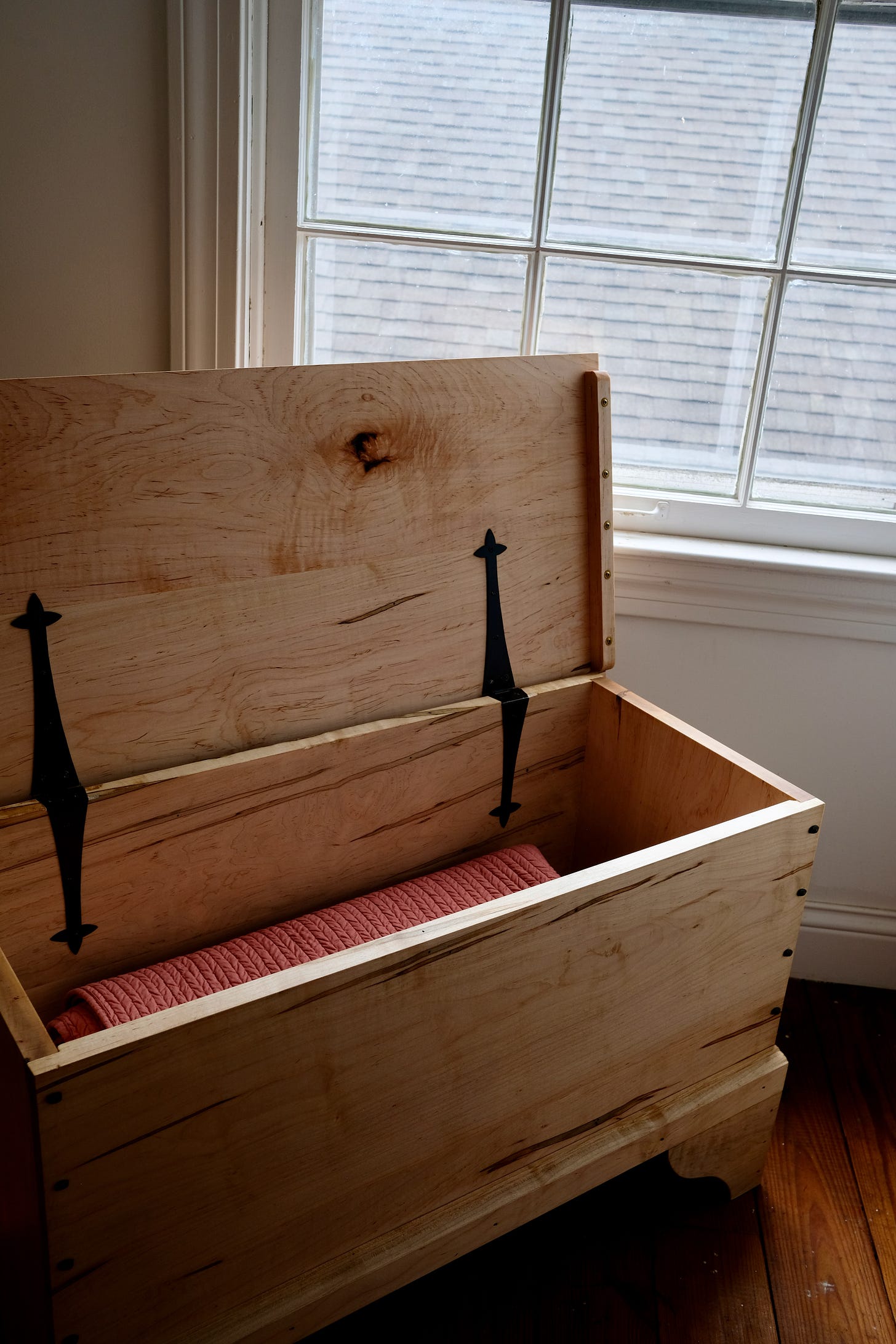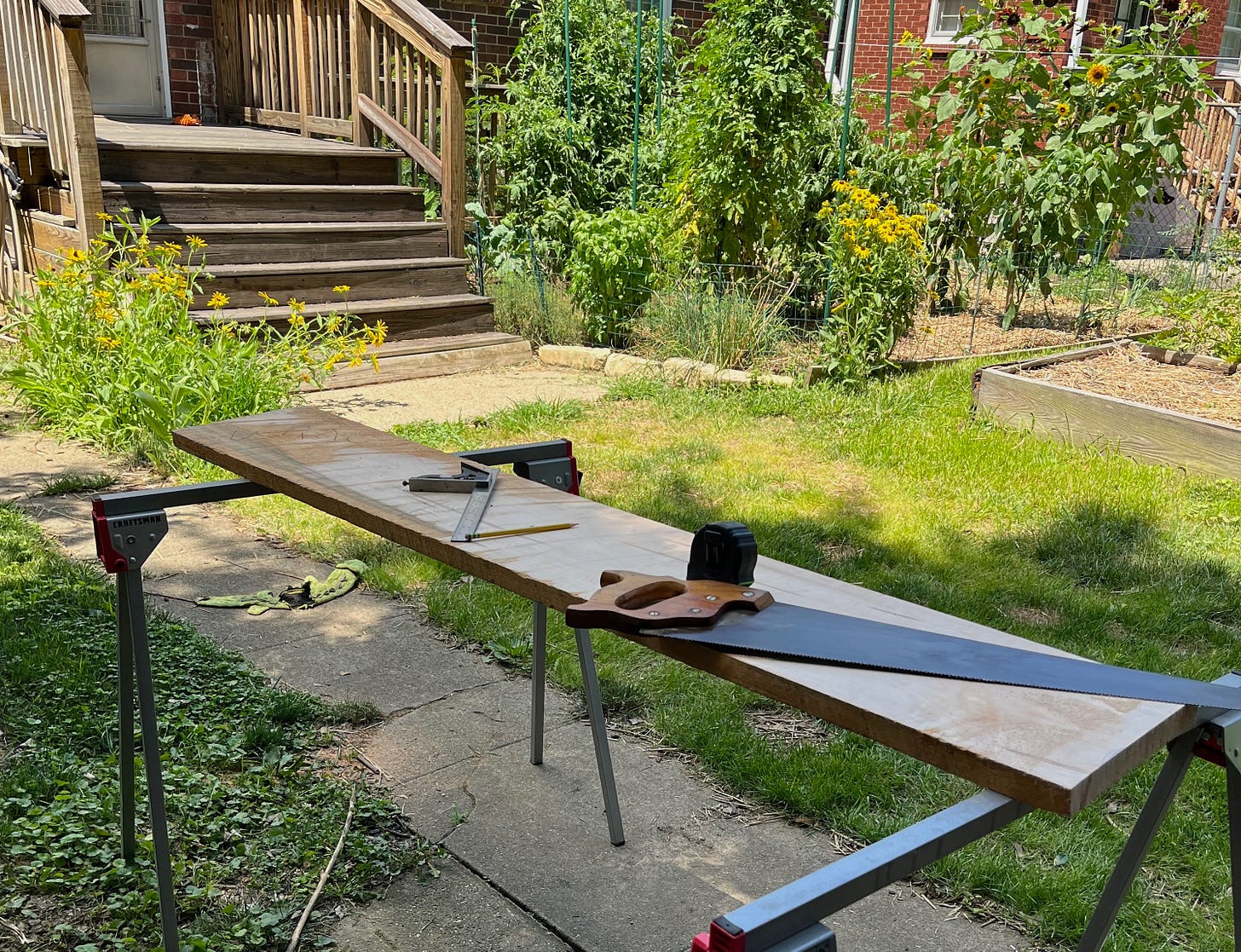I’ve been spending a lot of time with Christopher Schwarz’s book, The Anarchist's Design Book. I am drawn towards its focus on the common man’s furniture: furniture that has been in homes for a 1000 years and that is easy to make with a handful of old tools. Furniture that often broke every rule, yet lasted for generations.
One of the pieces that caught my eye is the Six-Board Chest. One could be forgiven for labeling a six-board as a blanket chest. It is both exactly that, and much more at the same time. The main purpose of a chest is not, as you might think, to store things.
Like many American families with a traditional bent, I grew up with a six-board chest in our home, where it led a romantic existence in my sister Robin’s room. I was one of those kids who always liked digging through old stuff in the attic, the bottoms of closets and our family’s chests. So sometimes I’d clear off all of Robin’s swimming trophies from the top and lift the pine lid. Inside were bits and pieces of my family’s history that made us seem more interesting than we really were 1
I’ll go a step further than that. A chest’s sole purpose is to create wonder. Your family’s own wardrobe that generations of children can stumble through. A chest that breaks all the rules and it doesn’t seem to matter.
This isn’t so much a post about how to build a six-board chest. You can read Schwarz’s book for that; it’s publicly available as a PDF after all. Though I will warn you, Schwarz is often heavy on inspiration and light on instructions. That’s a good thing.
So if not step by step instructions, what is this all about? This is about the broken rules and why you might break them too.
Before you can woodwork, you must first have wood. Schwarz recommends using pine for this project for a very practical reason: softwood moves less than hardwood. A six-board chest has grain nailed together in opposing directions. This should cause any modern woodworker to wonder how the expanding and contracting forces of the wood have not caused the panels to split. Yet we have examples of chests built in this exact way that have not catastrophically failed as one might expect if you’ve read enough woodworking posts on Reddit. Though, Schwarz points out that this is probably due by a combination of nails, which flex, and softwood like pine, that has less wood movement.
In the first of many deviations from Schwarz’s instructions, I used red maple instead of pine. I did not have access to pine for this project but I did have access to red maple. A harder wood, but hopefully soft enough. A Fine Woodworking article seem to indicate that red maple has about 30% more movement than the sugar pine Schwarz uses.
Will this cause problems? I don’t know for sure, though I am certain I will find out.
Nails. Nails are the steel glue that holds this project together, but not just any nail. I used Decorative Wrought Head from Tremont Nail Company. These cut nails are still made on the original 19th and early 20th century machines. Cut nails function different than their modern descendants. They have a much higher holding power due to the wedging action caused by the nail’s taper as it’s driven into the wood.
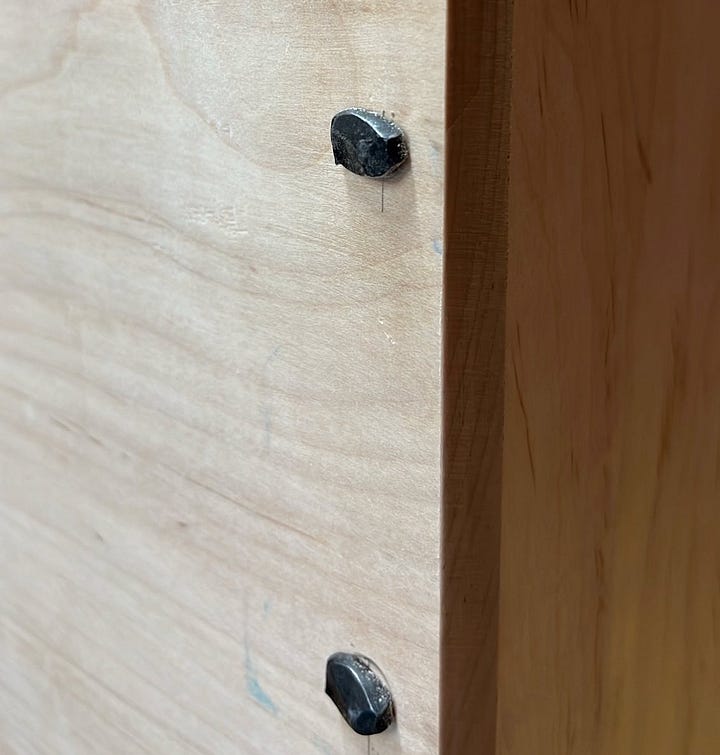
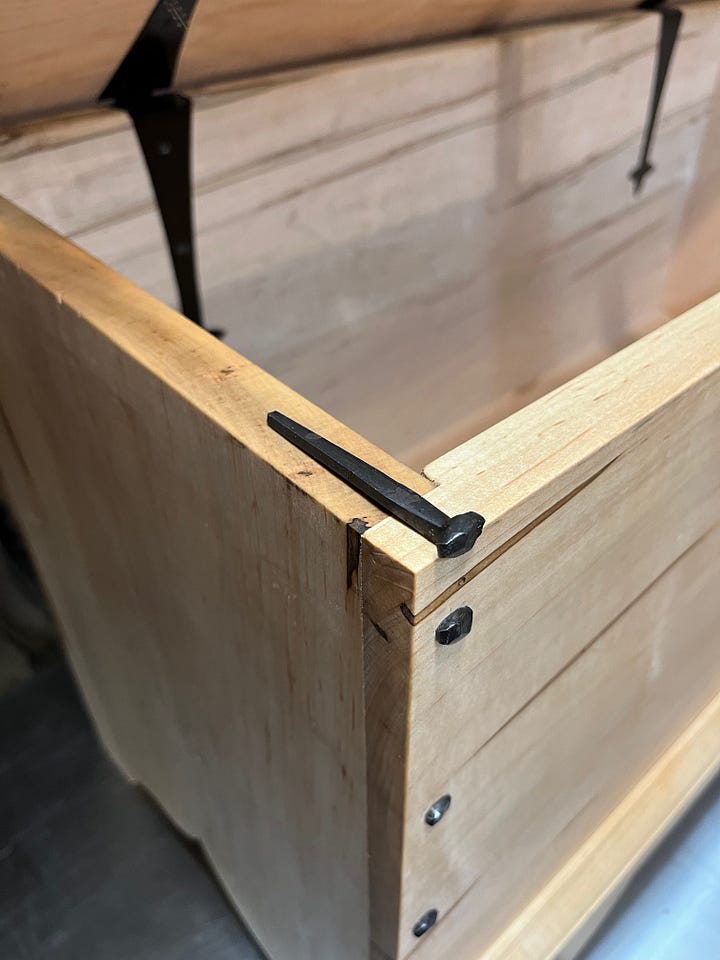
Us modern woodworkers go to great length to hide our fasteners. We either opt to use traditional joinery that avoid all fasteners or, if we do use something like pocket holes, we’re very careful to hide those holes. Seeing a pocket hole in furniture feels out of place. It makes it feel cheap, though it’s not. With these cut nails something is different. Even the unassuming fine finish nails feel special. You want to show them off. When you hammer them in, they seem to say, "If I don’t split the wood now I will go on holding for centuries.” Pocket holes just don’t impart the same confidence.
To ensure I did not split my boards (a very real concern) I hammered a few test nails into scrap. Wanting to retrieve my somewhat expensive nails but being unable to get the scrap boards apart, I resorted to fire. I retrieved my nails from the fire as if they were Shadrach, Meshach, and Abednego.
Apparently I am not alone. The burning of buildings to retrieve the nails used in their construction was apparently such a problem that in the 1640s the Virginia legislature passed an act that “forbade the burning of buildings for the nails”. I like to think the buildings were not burned for the value of the nails, but because there was no other way to get the boards apart once they had been nailed.
I’m a little ahead of myself though. Before you can nail these piece together, you’ve got to cut the legs… well, the sides. One thing that makes this piece interesting is that the sides are the legs and the sides have a beautiful Ogee cut into them. An Ogee is simple, its two semicircular curves, or for the common man, an S. If the top semi circle sticks out its cyma recta, if it curves in cyma reversa.
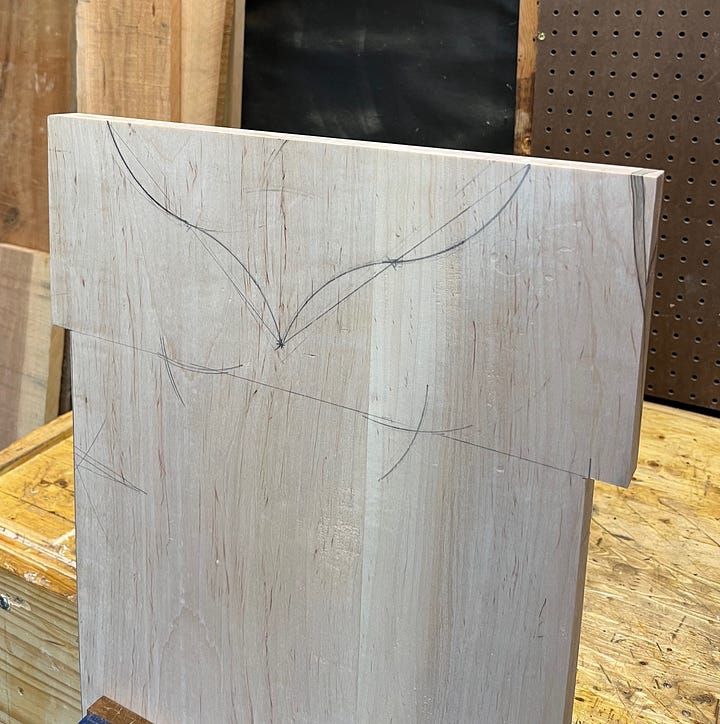
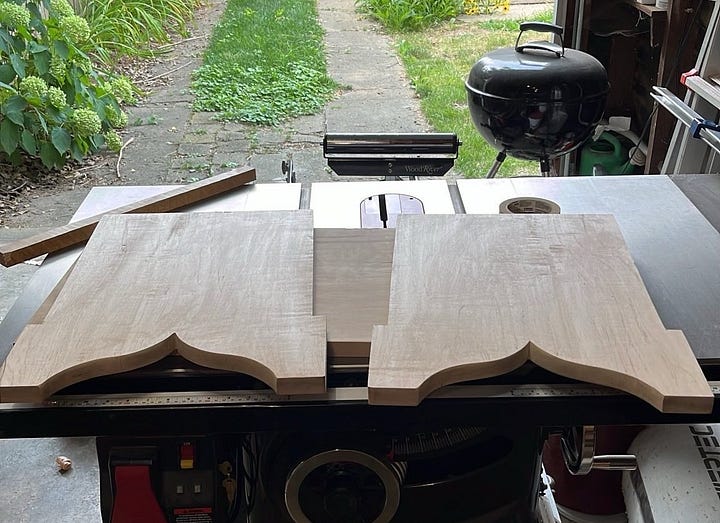
The Ogee is marked with a cheap compass and cut with an even cheaper coping saw. Saw marks can be smoothed out with a curved rasp, file, or even sandpaper wrapped around a dowel. This Ogee is an example of how a few simple tools and 45 minutes can add a beautiful level of detail. The hard part isn’t so much cutting them as learning that they even exist. I am thankful for authors like Schwarz who bring these features to our attention.
Another thing often forgotten today: molding, or if you’re British moulding, and there is nothing cooler than old molding planes. I use a lot of old tools, but few this old. For a few dollars on a site like hypperkitten you can regularly pick up a Pre-Civil War molding plan and get right to making beautiful trim. Using a molding plane is truly a unique experience. You run a small wooden box consisting of only a wedge and an iron across a piece of wood and the detail hiding just below the surface is revealed. No cords, no noise, just the beautiful sound of thin slices of wood being taken from a tool made by hand before Lincoln was a household name.
Schwarz touches on something that becomes very obvious at this point. He encourages you to use molding everywhere. Are you supposed to use molding on end grain when you make the lid? Probably not. Schwarz says as much and then tells you to go for it anyway, and it turns out great!
There’s a lesson here. Woodworking is a craft full of rules and competing rules. Breaking those rules for yourself is the most reliable way to learn something amazing. A master woodworker, if such a thing even exists, might look at my shop and determine that I am dead-set on learning everything the hard way. There would be more truth in that statement than he could know.
So take the risk, try something that shouldn’t work. If it fails, maybe your chest will be an inch narrower, or half an inch shorter. Maybe the front of your chest will split, maybe it won’t. Who cares.
As Wendell Berry wrote2, and I think it applies here:
So, friends, every day do something that won’t compute. Love the Lord. Love the world. Work for nothing. Take all that you have and be poor. Love someone who does not deserve it. Denounce the government and embrace the flag. Hope to live in that free republic for which it stands. Give your approval to all you cannot understand. Praise ignorance, for what man has not encountered he has not destroyed.

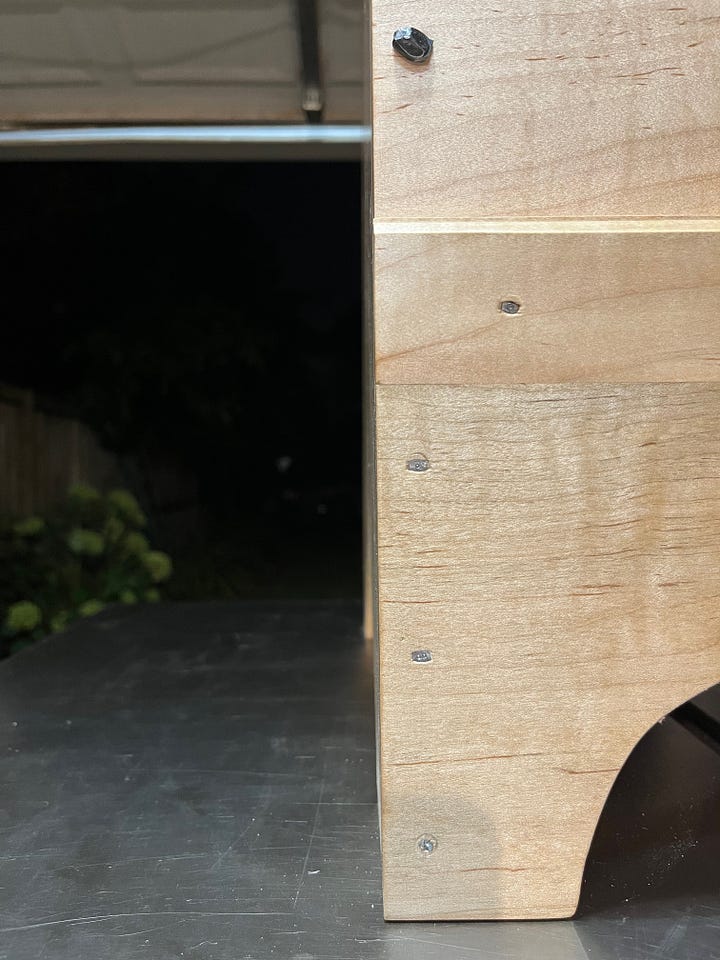
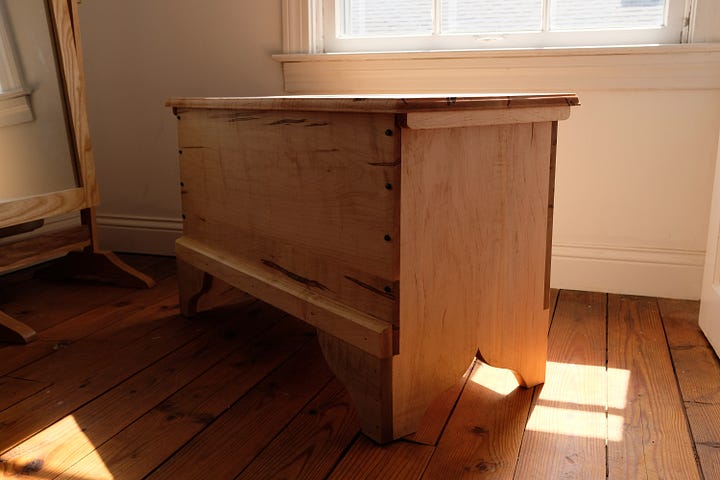
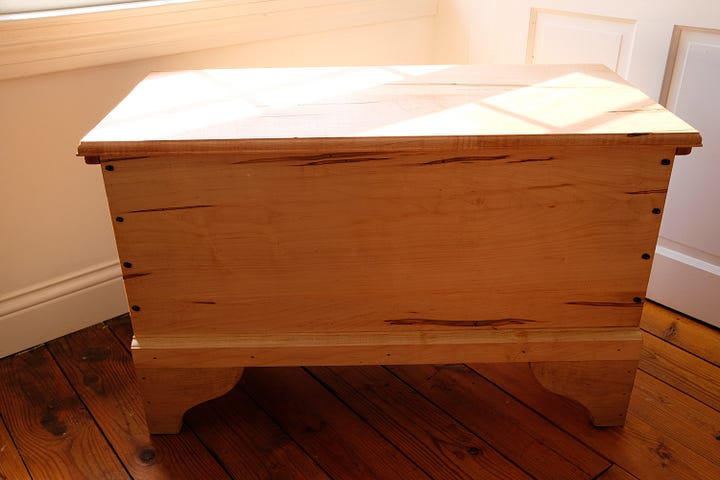
Christopher Shwarz, “The Anarchist’s Design Book”, p. 411
Wendell Berry, “Manifesto: The Mad Farmer Liberation Front”

